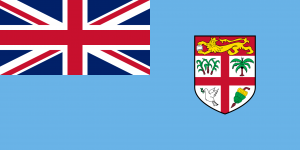Difference between revisions of "Language/Fijian/Grammar/Plurals"
m (Quick edit) |
m (Quick edit) |
||
| Line 54: | Line 54: | ||
<hr>If you have any questions, please ask them in the comments section below.<br>Feel free to edit this wiki page if you think it can be improved. 😎 | <hr>If you have any questions, please ask them in the comments section below.<br>Feel free to edit this wiki page if you think it can be improved. 😎 | ||
==Related Lessons== | |||
* [[Language/Fijian/Grammar/Questions|Questions]] | |||
* [[Language/Fijian/Grammar/Future-Tense|Future Tense]] | |||
* [[Language/Fijian/Grammar/Pronouns|Pronouns]] | |||
* [[Language/Fijian/Grammar/Conditional-Mood|Conditional Mood]] | |||
* [[Language/Fijian/Grammar/Negation|Negation]] | |||
* [[Language/Fijian/Grammar/Adjectives|Adjectives]] | |||
{{Fijian-Page-Bottom}} | {{Fijian-Page-Bottom}} | ||
Revision as of 22:53, 25 February 2023
Hi Fijian learners!😊
Learning Fijian Grammar can be a challenge, but it's also a lot of fun! In this lesson, we'll be looking at how to form plurals in Fijian.
Overview
In Fijian, there are two main ways to form plurals: by adding the suffix -ga or by using reduplication. Let's take a look at each of these methods in more detail.
Adding the Suffix -ga
The most common way to form plurals in Fijian is by adding the suffix -ga. This suffix is added to the end of the word, and it changes the meaning from singular to plural. For example, the word vosa (word) becomes vosaga (words).
It's important to note that not all words can take the -ga suffix. Some words, such as proper nouns, cannot be pluralized in this way.
Reduplication
Another way to form plurals in Fijian is by reduplication. This involves repeating the word twice, with a slight change in pronunciation. For example, the word tamata (person) becomes tamatatama (people).
It's important to note that not all words can be reduplicated. Some words, such as proper nouns, cannot be pluralized in this way.
Examples
Let's take a look at some examples of how to form plurals in Fijian.
- bula (hello) becomes bulabula (hellos)
- vosa (word) becomes vosaga (words)
- tamata (person) becomes tamatatama (people)
- yalewa (woman) becomes yalewayale (women)
Practice
Now it's time to practice forming plurals in Fijian. Try to form the plurals of the following words:
- sere (book)
- dau (day)
- vakarokoroko (bird)
- vakaviti (island)
The answers are:
- seresere (books)
- daudau (days)
- vakarokorokoroko (birds)
- vakavitiviti (islands)
Conclusion
In this lesson, we've looked at how to form plurals in Fijian. We've seen that there are two main ways to do this: by adding the suffix -ga or by using reduplication. We've also seen some examples of how to form plurals, and had a chance to practice forming them ourselves.
To improve your Fijian Grammar, you can also use the Polyglot Club website. Find native speakers and ask them any questions!
If you have any questions, please ask them in the comments section below.
Feel free to edit this wiki page if you think it can be improved. 😎
Related Lessons
